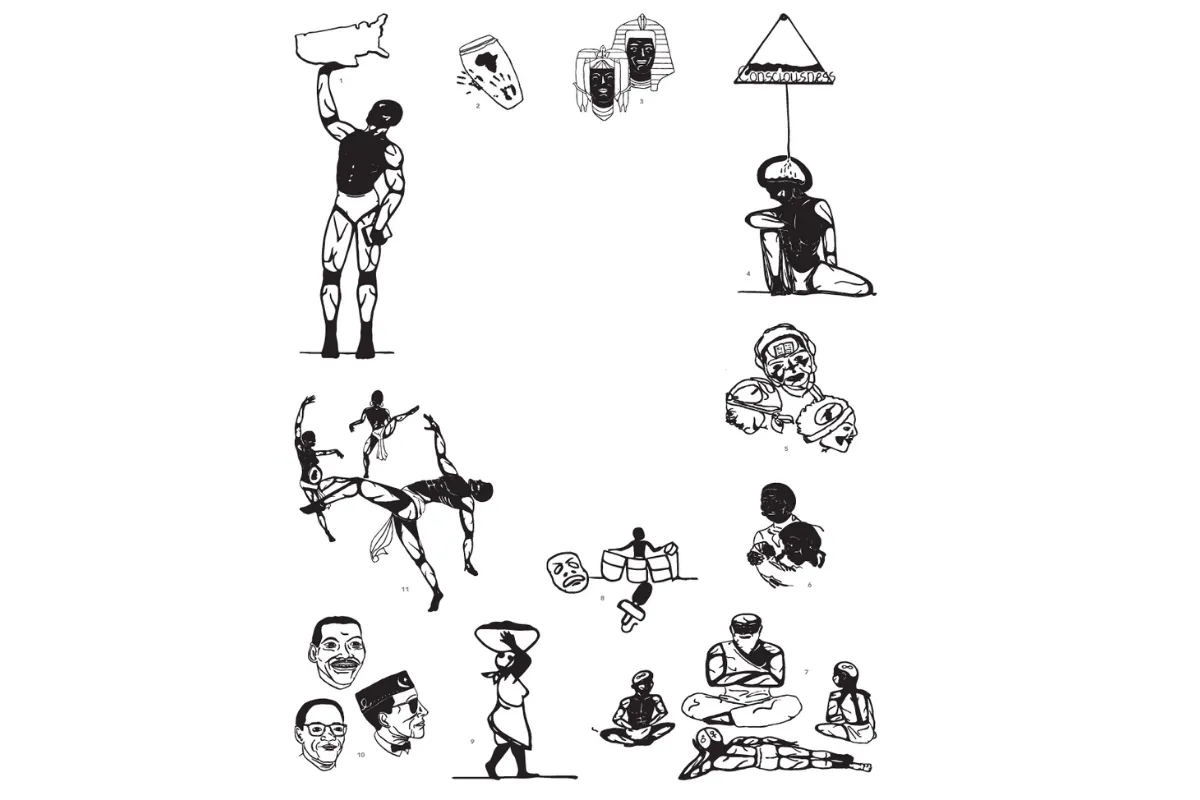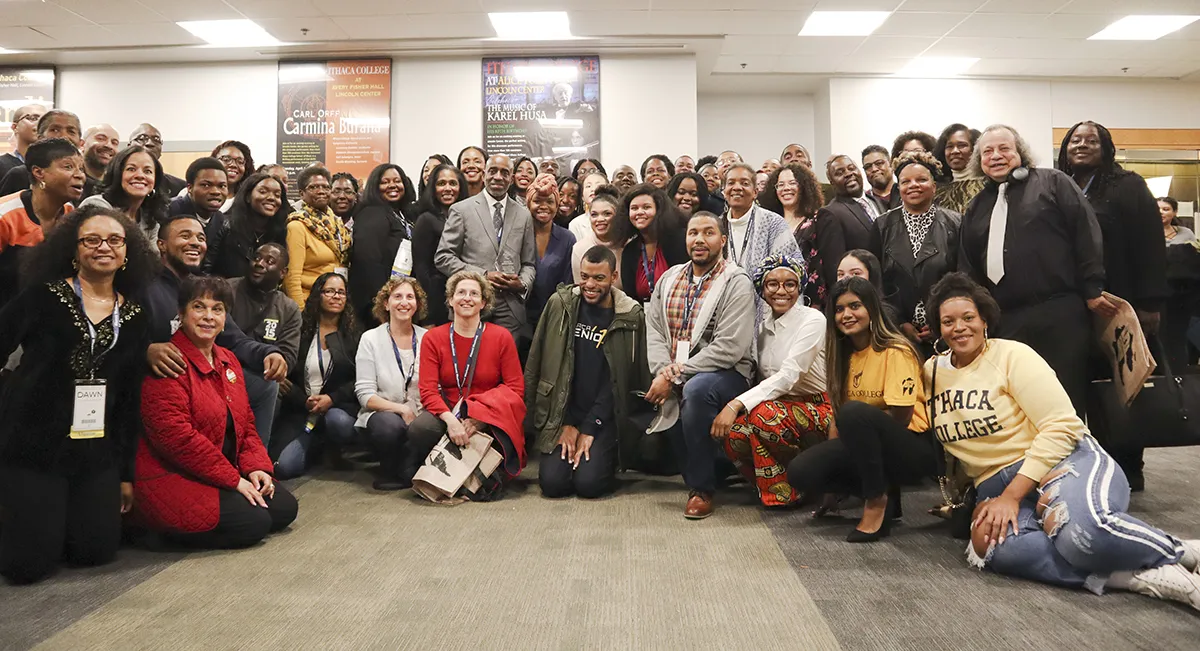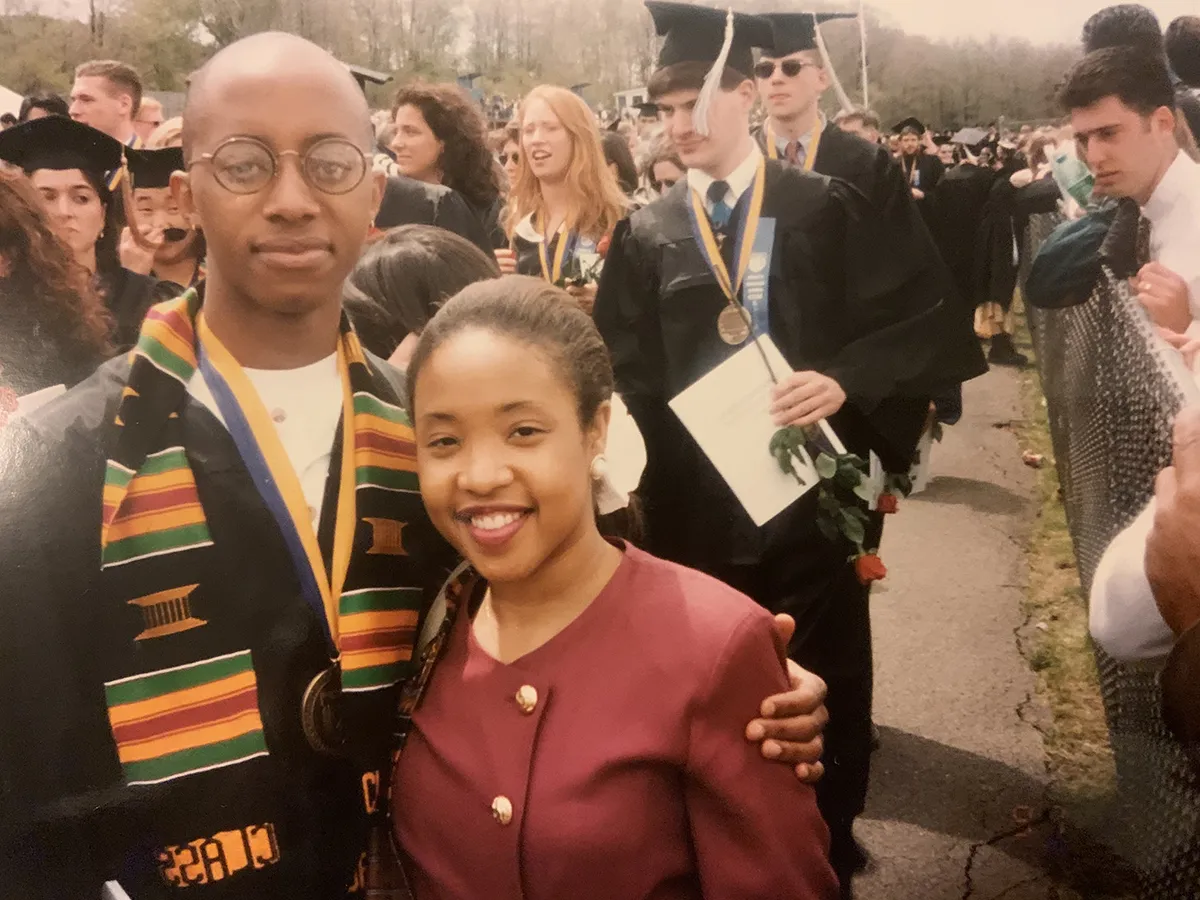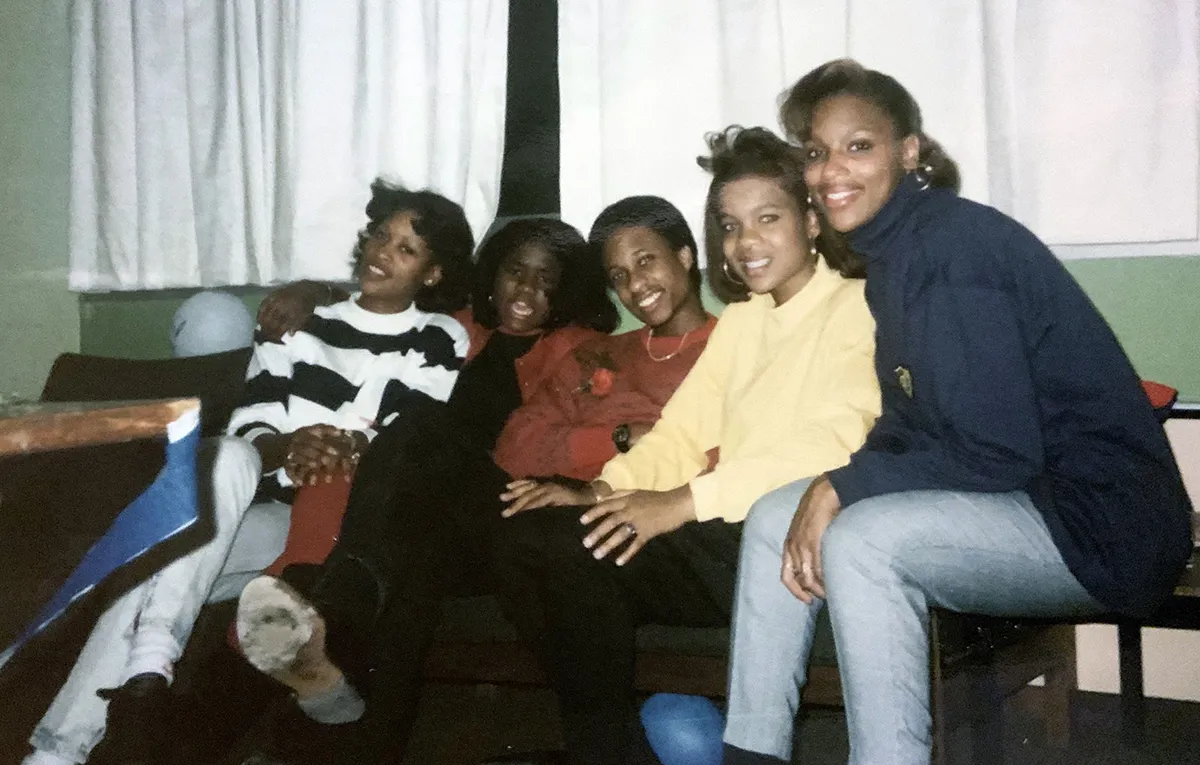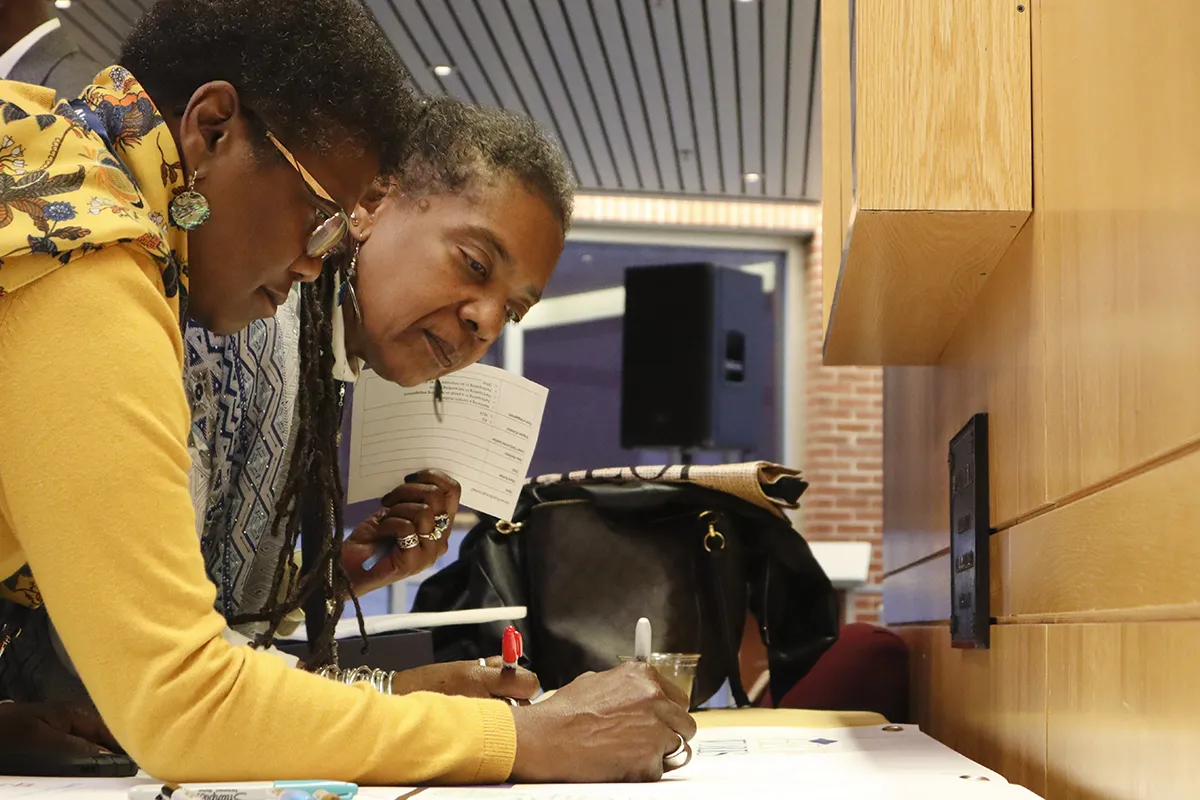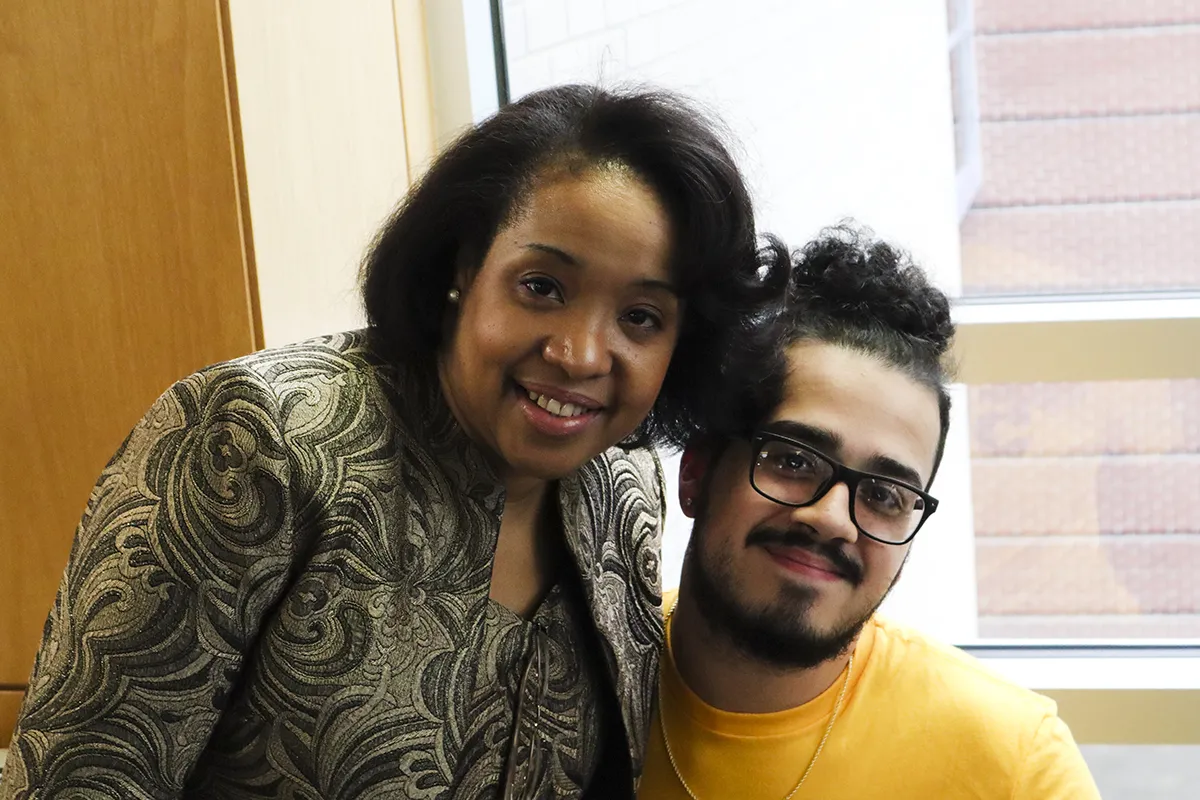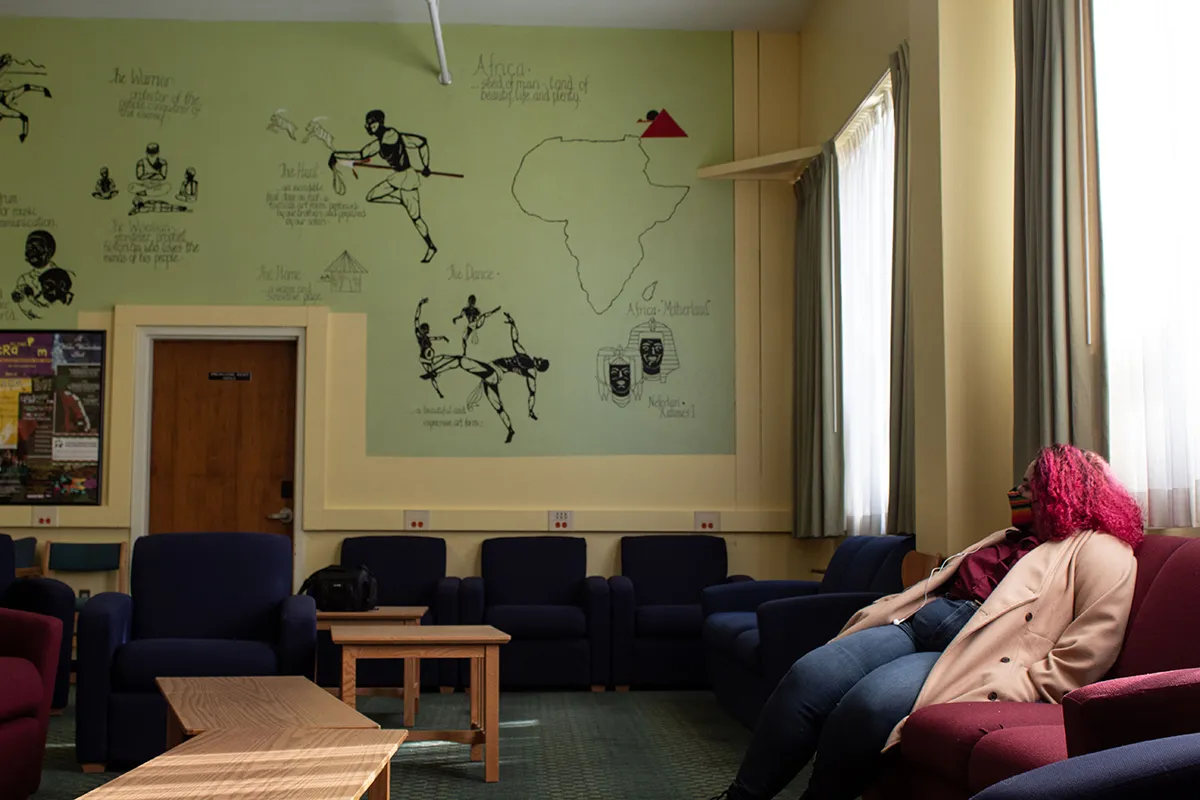TODAY, THEY ARE CALLED “students of color,” and their individual perspectives and cultural memories might be very different from one another. But still, they have for more than 50 years found comfort and inspiration in each other, bound together and even supported by whatever common threads ran through the fabric of their respective experiences. When their support network somehow fell short, they found hope and encouragement where they could. Sometimes, it even came to them like a care package from another time or place.
In 1996, young Ithaca College administrator Dr. Jill Holmes- Robinson ’89 was conversing in the African-Latino Society room with someone who did not know her or her particular frustrations, but still, she recalled how this stranger “got it.”
“She said, ‘Don’t cry. Just know you are here for a reason,’ and she gave me this big grandmother hug,” Holmes-Robinson remembered.
